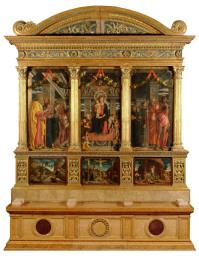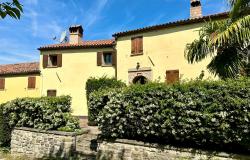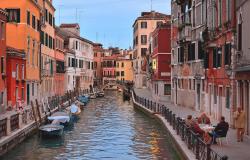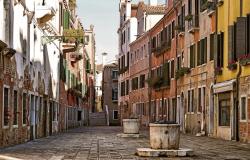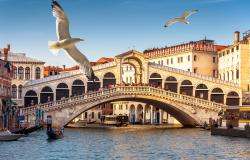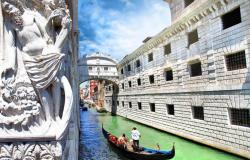One of the greatest works by Renaissance master Andrea Mantegna is to dazzle visitors once more following a two-year restoration.
The San Zeno altarpiece, removed from its permanent display in a Verona church in 2007, will be unveiled to the public on May 21, the feast day of the city's patron Saint Zeno.
The culture ministry ordered the restoration on the monumental altarpiece after experts diagnosed a series of conservation problems with the painting's surface, its wooden supporting and the frame.
These were mainly the result of three factors: natural aging; problems with previous restorations; and a poorly executed earlier project to remount the painting.
The altarpiece, which measures 4.8 by 4.5 metres, was the final work painted by Mantegna in his native Padua before he moved to Mantua.
It stood in Verona's Church of St Zeno until Napoleon ordered it sent to the Louvre in Paris, where it arrived in 1798.
The main triptych was eventually returned to Verona but the three paintings making up the predella, or altar step, remained in France.
The Crucifixion is still with the Louvre but The Resurrection and The Agony in the Garden are in the Musee des Beaux-Arts in Tours, where they were sent in 1806.
The main triptych depicts the Madonna and Child in the centrepiece, flanked by Peter, Paul, Zeno and John the Evangelist in the left-hand painting and Benedict, Lawrence, Gregory and John the Baptist in the right.
In addition to returning the painting to its former glory, the work by Italy's top restoration laboratory, the Opificio delle Pietre Dure, has caused experts to reassess Mantegna's birth-date.
Until now, historians accepted that the artist, considered northern Italy's first fully-fledged Renaissance painter, was born near Padua in 1431.
However, the discovery of a date on the painting suggests he may have been born some years earlier.
Preliminary studies for the restoration using infrared technology revealed the date 1443 on one of the central panels.
This makes the work 13-16 years older than previous estimates, which dated it to 1457-1460.
But this would mean Mantegna was just 12 years old when he painted it - too young even for his prodigious talents to produce a piece of such maturity.
Italian researchers think it is more likely the accepted date of Mantegna's birth is wrong.
Although the year 1443 also appears on another part of the altarpiece, experts previously thought this referred to the date Gregorio Correr, the man who commissioned the altarpiece, became abbot of the San Zeno Benedictine Monastery.
The new discovery has made them change their mind.
The restored work will go on temporary show for a few days at the Opificio delle Pietre Dure in Florence before being returned to Verona.
